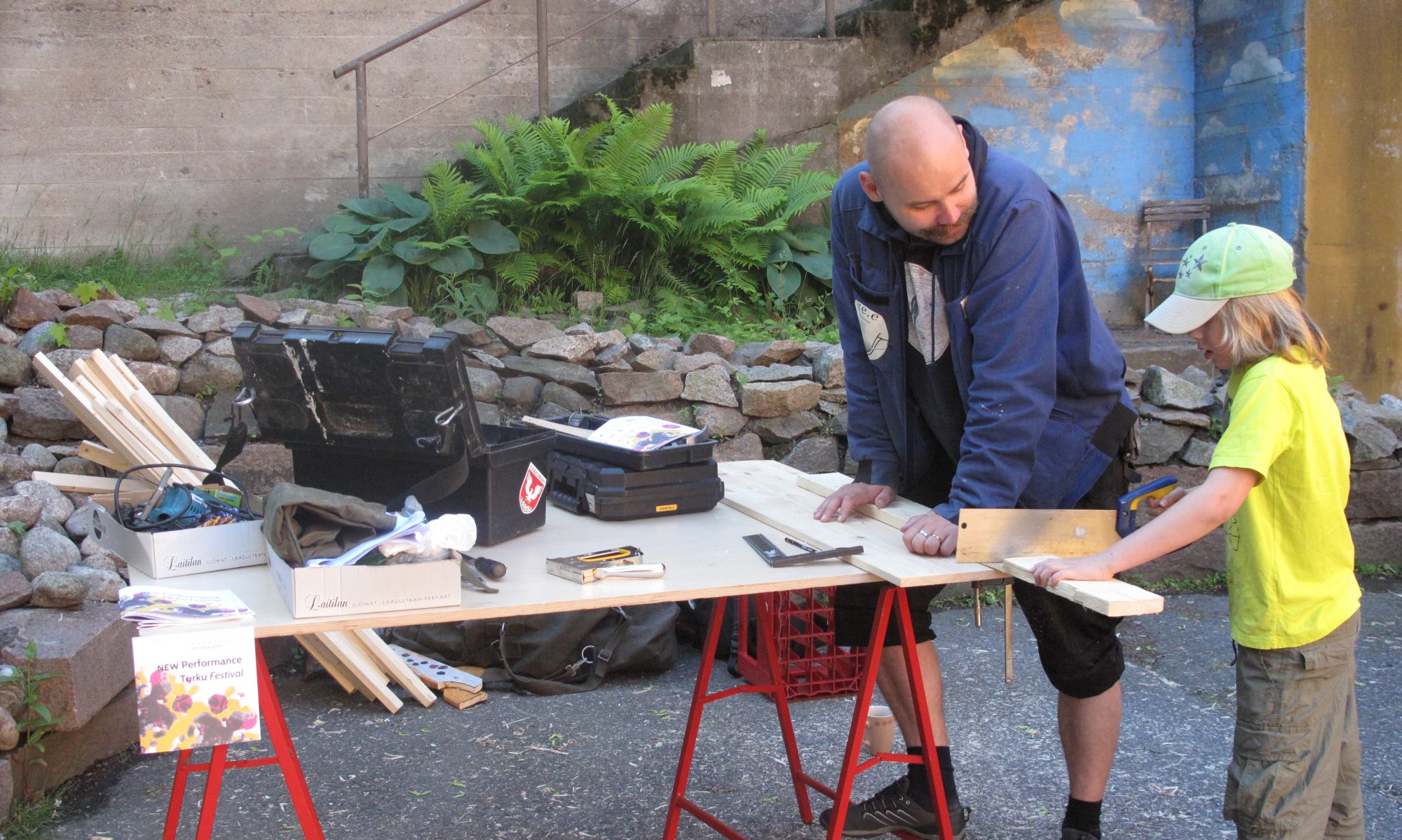A current trend is that artist strive to control their presence in the media by declining interviews, presentations and talks which might fail to represent their art according to their taste. Instead surrendering to the gaze of the media, they strive to produce illustrations of their work which remain as clean, risky, rugged, cool etc. as they choose. It appears that having your professional activities analysed by someone else is seen as a failure. Back in the day having random people talk about your work was a goal for many artist and there was “no bad press”. Things have changed. Cultural life is heading to an independent direction but there are some problems in the current phase. I think artists should not be so afraid to appear foolish and to make mistakes. Mistakes are all we have left of humanity.
In 2014 I was criticised about giving an interview for the HS magazine. The text portrayed performance and ecologically orientated art in an childish/stereotypical light. It still reads as a boring text, aiming to stir public critique on the HS mag. comment section. But it also encapsulates how the nationwide media outlet approached performance and ecologically orientated art in the beginning of the new century. Every contemporary reader can analyse what the HS mag. article is trying to achieve. HS mag. is ridiculous with their patronising and provocative tone (Just listen to journalist Anna Perhos efforts in Finnish. Even her anger about the entire affair is fake. She’s a institutionally funded but a tad tried professional provocor). I think it’s clever to allow them to portray artists as they do, just to show how fucked up their values are and unskilled they are in dealing with topics that are new to them.
Artist who are striving to control their brand might inadvertently portray the early 21th century as a smart and well thought of era. This is the professional side of current autobiography-and-emancipation-via-selfie trend and I do feel that there is sense in authoring how art is talked about by our selfs. We should however acknowledge that declining interviews and controlling brands is not an option for everybody. Only well-off creators, who have their backs covered have the option of controlling their public image. The subject is loosely touched in the “Closing the Loop” article by Aria Dean in the The New Inquiry.
“The Internet already flattens subjectivities into networks of branded associations and metadata. Mental and social operations are concretized and subjects are made objects in a platform-based social world. In this schema, it is perhaps inadvisable for those of us whose subjectivities have not yet been recognized on a large scale to objectify ourselves further using the tools vetted by those who perpetuate our oppression to begin with — even in efforts toward documenting one’s life with the hope of subverting external expectations.”
The text points out how past narratives of gender, race and class still strive in contemporary public media’s (Interestingly battling racism etc. might be even harder in the future as the public cannot be reached through the classic mass media). I read the text as a call for new public broadcasting missions.

